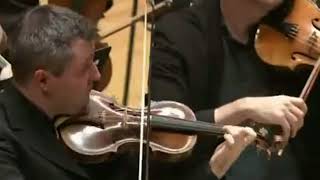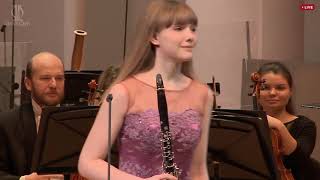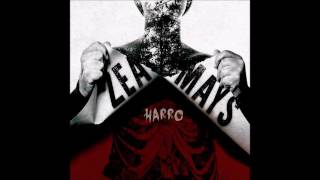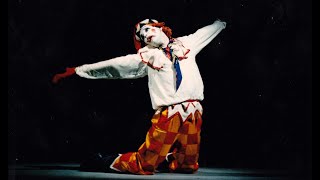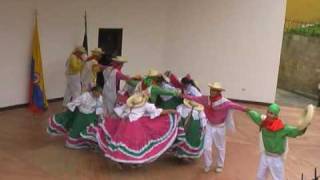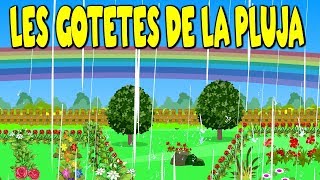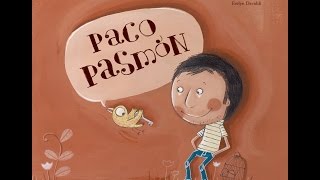November 25th is commemorated as the International Day for the Elimination of Violence against Women
The International Day for the Elimination of Violence against Women is commemorated annually on November 25 to denounce the violence perpetrated against women worldwide and to demand policies in all countries for its eradication. The initiative was launched by the Latin American feminist movement in 1981, commemorating the date in 1960 when the three Mirabal sisters were assassinated in the Dominican Republic. In 1999, the United Nations General Assembly adopted the day of action, defining violence against women as "any act of gender-based violence that results in, or is likely to result in, physical, sexual or psychological harm or suffering to women."
Recommended music videos for initiation to classical music
Boikot is a Spanish punk rock band from Madrid that started in 1987 playing in bars, parties, and all sorts of dives. After a few lineup changes, they recorded two albums with the Barrabás label. They gained recognition playing in Madrid venues until 1995, when they left Barrabás and decided to start their own production company, BKT . They released two albums, Cría Cuervos and Tu Condena , and played at diverse rock festivals such as Festimad and Metaliko Rock , among others. Following this, the group decided to create a trilogy called La Ruta del Ché (The Che Guevara Route), whose three albums would include different versions of popular songs recorded and performed during their tours of countries like Cuba, Mexico , and Argentina . During this period, the group drew inspiration from the South American countries they visited and incorporated a greater number of Latin American instruments and rhythms. During 2007, as in previous years, the band performed at numerous festivals in Colombia, Germany, Italy , and Turkey . Their eleventh album, titled Amaneció , was released on April 2, 2008, under the Realidad Musical label.
Johann Sebastian Bach (1685-1750) was a German violinist, organist, conductor, and composer. Born in Eisenach into one of history's most prominent musical families, which boasts over 30 famous composers, he obtained his first position as a court musician for the Prince of Arndtstadt in 1703. In 1707, he moved to Mühlhausen as organist, where he married his cousin Maria Barbara, with whom he had seven children. After his wife's death in 1720, he remarried a year and a half later to Maria Magdalena, with whom he had thirteen more children. In 1723, he moved to Leipzig , where he resided until his death at the age of 65. A prolific composer, he is considered one of the three greatest geniuses in the history of music, along with Mozart and Beethoven.
The catalogue of Bach's works, or Bach-Werke-Verzeichnis , better known by its acronym BWV , consists of a numbered index of all the composer's works, arranged thematically by genre and whether vocal or instrumental, and used by scholars and musicians worldwide. This catalogue was created in 1950 by the German musicologist Wolfgang Schmieder .
Today we offer the First Movement, Allegro, of the Violin Concerto No. 2 in E BWV 1042 in a performance by violinist David Garrett accompanied by the Orchestra da Camera Fiorentina conducted by maestro Giuseppe Lanzetta .
Gabriel Fauré (1845–1924) was a French composer, pedagogue, organist, and pianist, considered one of the most prominent French composers of his generation; his musical style influenced many 20th-century composers. Among his best-known works are the Pavane, the Requiem , the Piano Nocturnes , and the songs Après un rêve and Clair de lune . One of his mentors was Camille Saint-Saëns , who became his lifelong friend. Upon achieving success, he held the important positions of organist at the Church of the Madeleine and director of the Paris Conservatory . His legacy has been described as the link between the end of Romanticism and the Modernism of the second quarter of the 20th century .
Catalogue of Fauré's works . His works are classified by their Opus number (from the Latin opus 'work'; op. abbreviation) which is a term used in music to catalogue the works of most composers since the 17th century .
The euphonium is a brass instrument that plays the baritone-tenor role in wind orchestras or concert bands ; it is also known as the euphonium (“sweet sound”), which highlights the character of its unique sound, making it suitable for the lyrical parts corresponding to that range. The euphonium fulfills the role of the cello in an orchestra in a concert band .
Papillon (Butterfly), Op. 77, is a work for cello and piano by Gabriel Fauré composed in 1884. The work, which bears the opus number 77 , is written for cello and piano and arose as a commission from the publisher Hamelle , following the success of Élégie , for the same ensemble; Hamelle wanted a score that would be the virtuosic counterpart to the Élégie . The composer, not particularly fond of gratuitous virtuosity, then performed "without great enthusiasm" and submitted the piece under the title Piece for Cello , while the publisher wanted the more marketable title Dragonflies , included in the publishing contract dated September 14, 1884. But the differences of opinion between the two parties persisted, to such an extent that Hamelle did not obtain an agreement to publish Fauré 's score until fourteen years later, in 1898. The piece appeared under the title Papillon , not without provoking this reaction from the composer: "Butterfly or fly away, put whatever you want." Since then, the work has become established as a landmark piece in the virtuoso cellist's repertoire. For musicologist Nicolas Southon , "the little work is, on the whole, in line with the publisher's wishes, both for its brilliant difficulty and for the undeniable appeal of its central section."
Today we offer it in a euphonium and piano version with Anthony Caillet and Miki Fujii
Johann Strauss II (1825-1899) was an Austrian composer, son of Johann Strauss and brother of composers Josef Strauss and Eduard Strauss . Known during his lifetime as "the Waltz King," he was a key figure in the evolution and sophistication of the waltz, transforming it from a peasant dance into a form of entertainment at the Imperial Court . He is the most famous member of the family for his waltzes, polkas, and marches; he also composed several operettas. His father wanted to spare his son the hardships of a musician's life, so it was his mother who helped and encouraged him to focus on music. His work forms the basis of the repertoire performed annually at the Vienna Philharmonic 's New Year's Concert .
Lisa Xanthopoulou (1968) is a Greek conductor who began her studies in Thessaloniki and furthered them in Germany and Italy . She is currently the principal conductor of the Thessaloniki Symphony Orchestra and a frequent guest conductor with major European orchestras. Today, leading the Cairo Opera Orchestra , she presents J. Strauss II 's Egyptian March .
Recommended classical music videos
Francesca Caccini (1587–after 1641) was an Italian composer, singer, lutenist, music teacher, and poet of the early Baroque period (1600–1750). She was born in Florence ; her father, Giulio Caccini , was a famous and popular composer and a pioneer of monophonic music; from a young age, he taught her music and composition. Her mother, Lucia Gagnolanti , was also a singer; her younger sister, Settimia , also became a composer, and she had an older brother, Pompeo Caccini , who was a singer and painter. She received a humanistic education: Latin, some Greek, as well as modern language and literature and mathematics. She was one of the few female composers of the 17th century whose works were published.
La liberazione di Ruggiero dall'isola d'Alcina is a comic opera in four scenes by Francesca Caccini , which premiered on February 3, 1625, at the Villa di Poggio Imperiale in Florence , with a libretto by Ferdinando Saracinelli , based on Ludovico Ariosto's Orlando Furioso . It is the first opera written by a woman and was long considered the first Italian opera to be performed outside of Italy . It is Francesca 's only surviving opera. It is written in the stile moderno ; that is, in the style of Claudio Monteverdi , although the work owes possibly more to the work of Jacopo Peri . It uses the new stile recitativo , as well as canzonettas in the style of the Concerto delle donne .
Today it is offered to us by the musicians of the "Antonio Vivaldi" Conservatory of Alessandria under the coordination of maestro Marco Berrini .
Franz Joseph Haydn (1732-1809), an Austrian composer whose brother Michael Haydn was also a notable composer, was one of the principal figures of the Classical period (1750-1810). At the age of six, he began his studies of harpsichord and violin. At eight, he was admitted as a chorister to St. Stephen's Cathedral in Vienna, where he received lessons in singing, piano, and violin. After his voice changed, he had to support himself by working various jobs while studying composition, analyzing the works of Carl Philipp Emanuel Bach . He laid the foundations for sonata form and the formal structure of the string quartet and the symphony ; he maintained a close friendship with Mozart and was Beethoven 's teacher. He died at the age of 77 in Vienna.
The catalogue of Haydn's works . Joseph Haydn's works are classified today according to the system created by Anthony van Hoboken. Each work is identified by a Roman numeral that corresponds to the category, which in most cases is associated with a genre. Some categories have subdivisions, indicated by a lowercase letter followed by an Arabic numeral that corresponds to the work's position within the category. These numerals are preceded by the word Hoboken (in memory of the catalogue's author) and sometimes by Hob (its abbreviation).
Haydn's Symphony No. 103 in E -flat major , Hoboken 1/103, is nicknamed " The Drumroll" because of the long timpani roll with which it begins; it dates from 1795 and is his penultimate symphony. The symphony was the eleventh of twelve composed for performance in England during Haydn 's two trips there (1791–1792, 1794–1795), arranged and organized by the great impresario Johann Peter Salomon .
Structure : I (0'12") ADAGIO – ALLEGRO CON SPIRITO (3'15"). After the opening drum roll, the bass instruments play a somber opening theme, the first four notes of which coincide with the Dies Irae chant from the Requiem Mass. The lively movement (3'14") in 6/8 time that follows the introduction is written in sonata form (exposition-development-recapitulation), with a single-theme exposition. In several places, the theme of the introduction is restated at a faster tempo. It also restates part of the initial introduction in the coda , a formal procedure previously adopted by Mozart . II (8'35") ANDANTE PIÙ TOSTO ALLEGRETTO. This movement is written in double variation form, with themes that alternate between the keys of C minor and C major , plus a coda . The themes of this movement are said to have been developed from Croatian folk songs that he knew. III (17'22") MENUETTO. The minuet is in the main key of E-flat major . Charles Rosen , in *The Classical Style *, chose this minuet to illustrate the point that minuets of the Classical period often had the first beats of each measure very marked, unlike the more fluid rhythm of the Baroque minuet . IV (22'14") FINALE: ALLEGRO CON SPIRITO. Like the first movement, the final movement begins with an almost ritualistic gesture, in this case a horn blast followed by a silence and repeated throughout the movement. It is in a fast tempo, has a monothematic exposition, and is written in rondo-sonata form. Like the themes of the second movement, the opening melody appears to have been taken from a Croatian folk song. (Comment that appears at the bottom of the video)
Today's performance is by Les Musiciens du Louvre, conducted by the French maestro Marc Minkowski .
Gioachino Rossini (1792-1868) was an Italian composer of 39 operas, numerous songs, some piano works, and some sacred music. He began composing at the age of 12; Rossini 's early compositions include numerous sacred pieces, an opera, several overtures, and a modest amount of instrumental music, much of it in the style of the early Viennese school of Haydn, Mozart, and Beethoven . In 1812, he was engaged by La Scala in Milan, where he achieved a memorable success with "The Touchstone." The following year, he premiered his first serious opera, " Tancredi, " in Venice , and soon after, another great success, "The Italian Girl in Algiers . " In 1815, he settled in Naples, where he wrote regularly and without pressure, with regular rehearsals and deadlines. In 1822, he moved to Vienna, where he met the admired Beethoven . From Vienna to London , back to Paris , and after the premiere of his last opera, William Tell , he left opera at the height of his economic and popular success at the age of 37. He died at the age of 77.
Introduzione, tema e variazioni per clarinet e piccolo Orchestra (Introduction, Theme and Variations for Small Orchestra) is a composition for B-flat clarinet and small orchestra or piano written in 1822 by Gioacchino Rossini, based on a theme from the beginning of the opera Mosè in Egitto (1818). It is representative of the capabilities of the early 5- to 8-key clarinet. (0'56") INTRODUCTION .-. (5'11") THEME .-. (6'00") VARIATION I .-. (6'38") VARIATION II .-. (7'15") VARIATION III .-. (7'58") VARIATION IV .-. (10'10") VARIATION V.
Today, the young Russian clarinetist of sixteen, Sofia Mekhonoshina, accompanied by the Russian National Orchestra conducted by Maestro Alexey Sobolev, presents it to us.
Ruth Crawford (1901–1953) was an American composer specializing in folk music . Her music was a leading exponent of the emerging modernist aesthetic, and she became a central member of a group of American composers known as the " ultramodernists ." Although she composed primarily during the 1920s and 1930s, Seeger devoted herself to folk music studies from the late 1930s until her death. Her music influenced later composers, particularly Elliott Carter .
A wind quintet is a group of five instrumentalists (mostly flute, oboe, clarinet, horn, and bassoon ). The term also refers to works composed for this ensemble. Unlike the string quartet , whose sound is very homogeneous, the instruments of a wind quintet differ considerably in timbre and technique. The modern quintet originated from the group sponsored by Joseph II of Habsburg in 18th-century Vienna : two oboes, two clarinets, two horns, and two bassoons. The quintets composed by Anton Reicha and Franz Danzi definitively established the genre: flute, oboe, clarinet, horn, and bassoon . Although they declined during the second half of the 19th century , they regained popularity in the 20th century .
Today it is the Emblems Quintet who offer us this Seeger Suite.
Recommended music videos for all tastes
Alton Glenn Miller (1904-1944) was an American trombonist, composer, and big band leader. At the age of 33, he founded the Glenn Miller Orchestra, with which he performed, recorded, and sold his compositions, achieving resounding success; between 1939 and 1942 alone, he had 16 number-one records in the USA . In 1942, in the midst of World War II, he enlisted in the army with the mission of performing for American troops; on one of these trips, while crossing the English Channel , his plane disappeared, and he was never heard from again. The current Glenn Miller Orchestra was founded in 1956 with the same ideas and objectives as in its beginnings.
Zea Mays is a rock band formed in Bilbao in 1997, consisting of Asier Basabe (drums), Rubén González (bass), Iñaki Imaz (guitar), and Aiora Renteria (vocals). In 1997, they recorded a demo, which won them the Basque Country Youth Demo Contest . The prize gave them a significant boost, leading to several concerts throughout the Basque Country . In 1998, they were considered the best Basque band in the Bilbao pop-rock competition. Also in 1998, they recorded their self-titled debut album, Zea Mays , followed in subsequent years by Elektrizitatea , Harrobian , Sortuz, and Grabitatearen aurka, while touring Germany and the Netherlands . In 2007, with ten years of experience under their belt, they released Morphina ; this was followed by Era Da and Harro , which we are featuring today.
Serge Gainsbourg (1928-1991) was a French singer, songwriter, pianist, poet, painter, screenwriter, writer, actor, and film director, considered the most important figure in French pop music during his lifetime. Gainsbourg wrote more than 550 songs, which have been performed by over 1,000 artists. Since his death, Gainsbourg 's music has achieved legendary status in France , and he is considered the greatest French musician and one of the country's most popular and beloved public figures . Serge Gainsbourg received more than ten gold records in France , as well as three double gold records, nine platinum records, and one double platinum record. As a singer, he sold over 10 million records worldwide.
Tini (Martina Stoessel, 1997) is an Argentine actress, singer, and songwriter who began her acting career at age 10 with a minor role in the children's series Patito Feo . In her teens, she rose to international fame in the Disney Channel Latin America original musical teen series, Violetta (2012-2015). In 2016, she shifted her focus to music by signing with Hollywood Records and releasing her self-titled debut studio album, Tini (2016). Her subsequent albums achieved great success in Argentina , the USA , and several other countries in the Americas and Europe. In 2021, she was named to ¡Hola! magazine's list of the 100 most powerful Latin women; and from 2019 to 2022, she was also named one of the 10 most influential women in Argentina .
Recommended peculiar videos
Petrushka is a ballet in one act and four scenes with choreography by Michel Fokine , music by Igor Stravinsky , libretto by Stravinsky and Alexandre Benois , and sets and costumes also by Alexandre Benois . It was composed during the winter of 1910-11 and premiered in Paris at the Théâtre du Châtelet by Sergei Diaghilev 's Ballets Russes on June 13, 1911, under the musical direction of Pierre Monteux . Petrushka is a straw and sawdust puppet of a comical and mocking nature, who comes to life and develops the capacity to feel. The work is characterized, among other things, by the so-called Petrushka chord , consisting of a C major and F-sharp major chord played simultaneously ( polytonality ), which often accompanies the appearance of the character of Petrushka almost as a leitmotif.
SCENE I (0'34"): In 1838, the Maslenitsa carnival fair is being held in Admiralty Square in St. Petersburg . A small theater is set up in the square where the Magician is performing. When the curtain rises, three puppets appear and, at the Magician 's command, begin to dance. The Moor and Petrushka are both in love with the Ballerina , but she clearly prefers the Moor. In a fit of jealousy, Petrushka attacks the Moor , and the Magician stops the performance. - SCENE II (10'34"): Locked in his room by the Magician, Petrushka protests the cruelty with which he is treated for expressing his feelings. The Ballerina appears, and Petrushka , overcome with emotion, rudely declares his love for her. The Ballerina leaves, frightened by Petrushka 's rudeness, leaving him in sadness and despair. SCENE III (15'05") (In the Moor 's room). Although the Moor is also a prisoner, he is happy with his situation. The Dancer enters, and the Moor flatters her; she is pleased with the treatment and allows him to embrace her. At that moment, Petrushka enters and threatens the Moor ; the Moor defends himself with his scimitar and makes Petrushka flee. SCENE IV (21'43") (The carnival fair in St. Petersburg 's square). The people have continued with the celebrations, unaware of what is happening inside the puppet theater. The festivities are interrupted when Petrushka emerges from the puppet theater, pursued by the Moor , who kills him. The people are frightened, thinking a murder has been committed; the police arrive and question the Magician , but on the ground there is only a rag doll. The party comes to an end, everyone leaves and the Magician takes Petrushka towards the puppet theater, but Petrushka 's ghost appears menacingly from the ceiling.
Maurice Ravel (1875-1937), born in Ziburu/Ciboure (Basque Country, France), inherited his meticulous work ethic from his father, an engineer of Swiss origin, and his passion for music from his mother, born in Mendata (Bizkaia, Spain), who filled his childhood with folk songs. A few months after his birth, the family moved to Paris , where he began his piano studies at the age of six. At fourteen, he entered the Paris Conservatory , where he had the opportunity to study with Gabriel Fauré . In 1901, he premiered his Jeux d'eau , a piano work that helped him gain recognition in Parisian musical circles, where the influence of Ravel on Debussy , and vice versa, was being discussed. In 1921, he settled in a mansion near Paris , where he lived until his death. This mansion became a gathering place for eminent musicians and intellectuals.
Daphnis et Chloé is a ballet with music by Maurice Ravel , who described it as a "choreographic symphony ." The libretto was adapted by Michel Fokine from a novel of the same title by the Greek writer Longus (late 2nd-early 3rd century AD). It tells the story of the discovery of love by two young people, a goatherd and a shepherdess, who, after various adventures (the presence of an admirer of Chloe , Dorcon , and a prostitute who tempts Daphnis , Lyceion ; Chloe 's abduction by pirates, etc.), reach a happy ending with the marriage of the protagonists. Ravel began working on the score in 1909, commissioned by Sergei Diaghilev . The ballet premiered at the Théâtre du Châtelet in Paris, performed by the Ballets Russes, on June 8, 1912.
Today, with choreography by Benjamin Millepied , set design by Daniel Buren , lighting design by Madjid Hakim i, the stars , principal dancers and the Corps de Ballet together with the Chorus (director Alessandro Di Stefano ) and Orchestra of the Paris National Opera conducted by maestro Philippe Jordan, we witness the staging, in its complete version, of the Ballet Daphnis et Chloé .
The " Danza de la Molienda " (or "La Molienda") is a popular dance in several regions of Latin America , especially in Colombia and Panama, that represents the sugarcane milling process. In Colombia , it is danced in rural courtyards, while in Panama it is associated with the Corpus Christi festivities. The dance has its roots in agricultural work, specifically the sugarcane milling process, and represents the rotating rollers in the iron mill that grinds the cane. The rhythm is similar to that of the Sanjuanero , with instruments such as the requinto, bandola, guitar, tiple, and flute. The dancers usually wear traditional regional costumes, such as headscarves, long skirts, and patterned dresses. The dance is accompanied by coplas, or songs, alluding to the sugarcane milling process.
"Shiva Shambho" is a chant or mantra that invokes Shiva , one of the most important gods in Hinduism, in his gentlest and most benevolent form, known as Shambhu . The phrase translates as "Shiva, the benevolent one" or "Shiva, the gentle one." Shiva Shambho is a common and powerful expression for invoking peace and well-being.
Bharatanatyam is a classical Indian dance form originating in Tamil Nadu , a state in South India . It is one of the eight or nine classical Indian dances, along with kathakali, mohiniyattam, odissi, kuchipudi, kathak, and manipuri . It is believed to be a reconstructed dance form derived from cathir, which itself is a reconstruction of older dances originating in the temples of ancient India, dating back to the 1st millennium BCE. These associations, however, require careful examination. There is no clear line linking Bharatanatyam to ancient dance forms. There is no certain way of knowing what dances were like 2,000 years ago, and it is necessary to recognize that the aesthetics and forms of contemporary Bharatanatyam are part of a nationalist vision that imposed an upper-class Brahmanic aesthetic over existing traditions in South India. The invention of Bharatanatyam is the result of a project that sought to blend an ancient past with the need to create a new identity for India as an independent nation. Bharatanatyam is usually accompanied by Carnatic music (classical music from South India).
Recommended music videos for children
Various Wikipedia articles and relevant information on Artificial Intelligence were used to prepare these texts.
The texts of Videomusicalis are written in Basque, Spanish and English.










